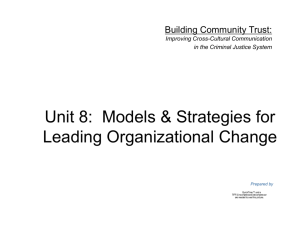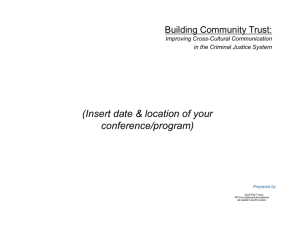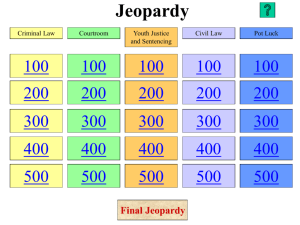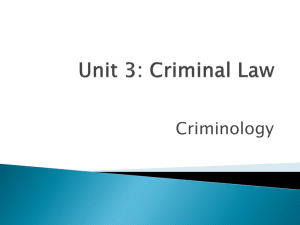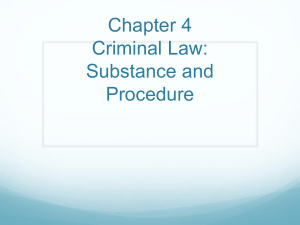Master's Comprehensive Exam Study
advertisement
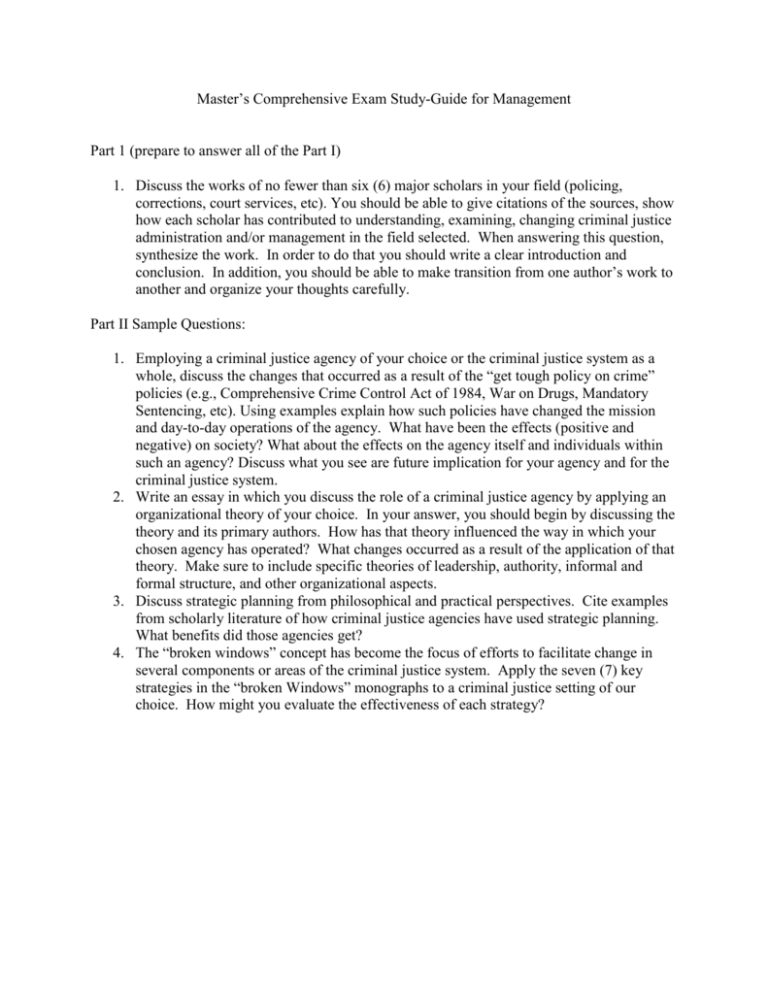
Master’s Comprehensive Exam Study-Guide for Management Part 1 (prepare to answer all of the Part I) 1. Discuss the works of no fewer than six (6) major scholars in your field (policing, corrections, court services, etc). You should be able to give citations of the sources, show how each scholar has contributed to understanding, examining, changing criminal justice administration and/or management in the field selected. When answering this question, synthesize the work. In order to do that you should write a clear introduction and conclusion. In addition, you should be able to make transition from one author’s work to another and organize your thoughts carefully. Part II Sample Questions: 1. Employing a criminal justice agency of your choice or the criminal justice system as a whole, discuss the changes that occurred as a result of the “get tough policy on crime” policies (e.g., Comprehensive Crime Control Act of 1984, War on Drugs, Mandatory Sentencing, etc). Using examples explain how such policies have changed the mission and day-to-day operations of the agency. What have been the effects (positive and negative) on society? What about the effects on the agency itself and individuals within such an agency? Discuss what you see are future implication for your agency and for the criminal justice system. 2. Write an essay in which you discuss the role of a criminal justice agency by applying an organizational theory of your choice. In your answer, you should begin by discussing the theory and its primary authors. How has that theory influenced the way in which your chosen agency has operated? What changes occurred as a result of the application of that theory. Make sure to include specific theories of leadership, authority, informal and formal structure, and other organizational aspects. 3. Discuss strategic planning from philosophical and practical perspectives. Cite examples from scholarly literature of how criminal justice agencies have used strategic planning. What benefits did those agencies get? 4. The “broken windows” concept has become the focus of efforts to facilitate change in several components or areas of the criminal justice system. Apply the seven (7) key strategies in the “broken Windows” monographs to a criminal justice setting of our choice. How might you evaluate the effectiveness of each strategy?



